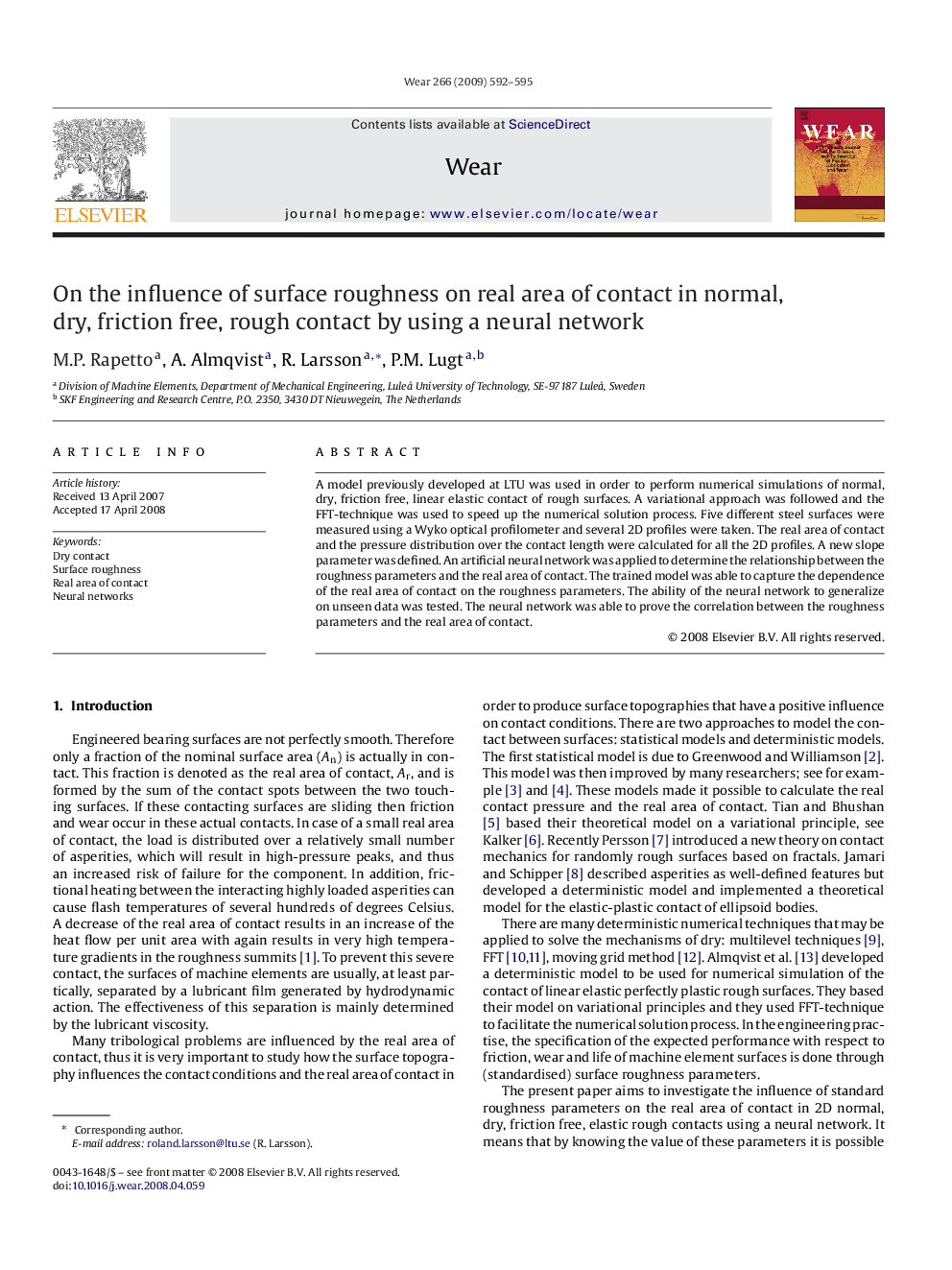| Article ID | Journal | Published Year | Pages | File Type |
|---|---|---|---|---|
| 618879 | Wear | 2009 | 4 Pages |
Abstract
A model previously developed at LTU was used in order to perform numerical simulations of normal, dry, friction free, linear elastic contact of rough surfaces. A variational approach was followed and the FFT-technique was used to speed up the numerical solution process. Five different steel surfaces were measured using a Wyko optical profilometer and several 2D profiles were taken. The real area of contact and the pressure distribution over the contact length were calculated for all the 2D profiles. A new slope parameter was defined. An artificial neural network was applied to determine the relationship between the roughness parameters and the real area of contact. The trained model was able to capture the dependence of the real area of contact on the roughness parameters. The ability of the neural network to generalize on unseen data was tested. The neural network was able to prove the correlation between the roughness parameters and the real area of contact.
Related Topics
Physical Sciences and Engineering
Chemical Engineering
Colloid and Surface Chemistry
Authors
M.P. Rapetto, A. Almqvist, R. Larsson, P.M. Lugt,
